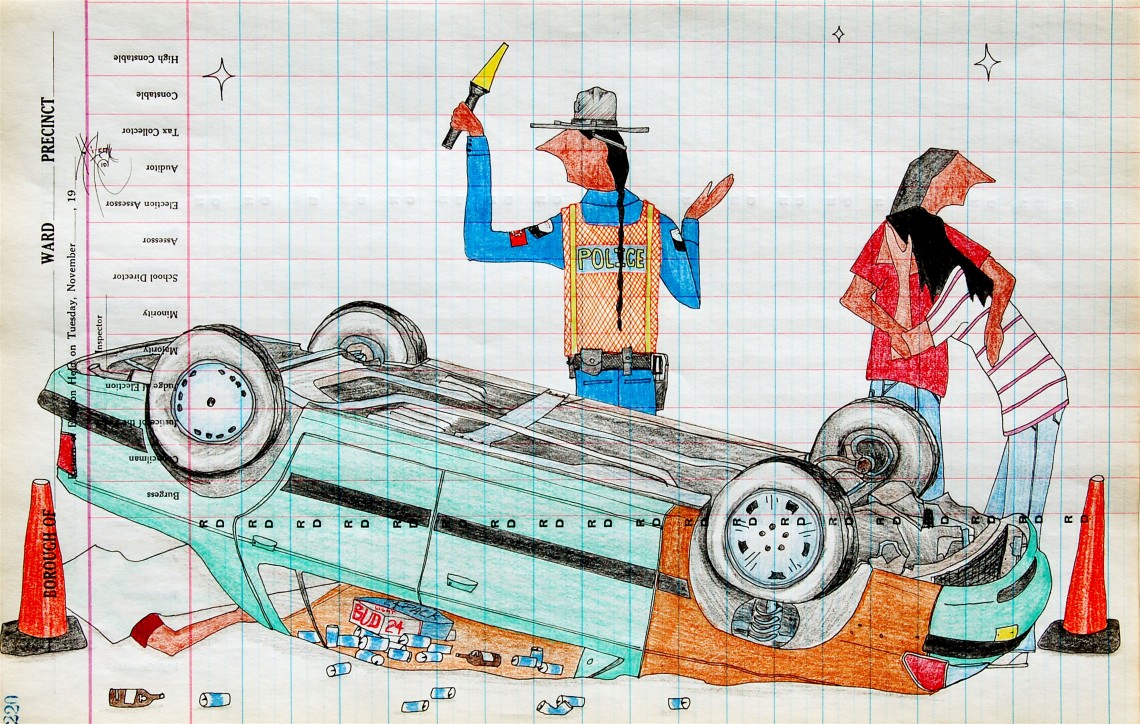 Dwayne Wilcox (Oglala Lakota, b. 1957), Budweiser Killed More Indians than Custer, 2010. Colored pencil and ink. Courtesy of the artist
Dwayne Wilcox (Oglala Lakota, b. 1957), Budweiser Killed More Indians than Custer, 2010. Colored pencil and ink. Courtesy of the artist
Contemporary Perspectives on the Battle of the Little Bighorn
Students curate a companion exhibition to "Red Horse"
Stanford senior Sarah Sadlier’s interest in Professor Scott Sagan’s Sophomore College summer seminar on the Battle of Little Bighorn in 2013 was personal. Sadlier, a Minneconjou Lakota Sioux, knew she had ancestors at the Little Bighorn.
When plans for the Cantor exhibition Red Horse: Drawings of the Battle of the Little Bighorn grew out of the seminar, she stayed with the project as a researcher.
Last fall Sadlier and Isabella Shey Robbins ’17, of the Diné tribe, created a course under the faculty sponsorship of Karen Biestman, associate dean and director of Stanford’s Native American Cultural Center and lecturer in Native American studies, that culminated in the student-curated exhibitionContemporary Indigenous Perspectives on the Battle of the Little Bighorn. The exhibition opens as a companion to Red Horse on Feb. 24 at the Cantor.
“Our fall course prepared students for the opening ofRed Horse: Drawings of the Battle of the Little Bighorn,” said Sadlier. “They learned about the cultural, historical, artistic, archeological, anthropological, linguistic and contemporary significance of the Red Horse drawings and representations of the Little Bighorn more broadly.”
The student-curated exhibition features painting, performance art footage, ledger art and photographs, which were chosen by the class from private collections. They selected these works based on the interdisciplinary and interpretive perspectives that they were introduced to over the course of the quarter.
For Robbins, co-teaching the class was an opportunity to highlight the work of the contemporary indigenous artists represented in the exhibition. She said, “It is really amazing to see the work of these artists that are not always seen in mainstream museums. The class allowed us to include the indigenous voices in the texts and the artwork, both old and new, and we were able to highlight the importance of Native voices that can still be heard and seen today.”
